From the Archives ...
Tiny creeks and sea run trout - Christopher Bassano
Presented from Issue 105, August 2013
Christopher Bassano fishes over 250 days a year. This interview was recorded just before he headed off to fish for Australia in the World Fly Fishing Championships in Norway 14-17 August 2013.
I live on a small stream and at the start of the season I like to go off on a bit of a discovery mission and fish the headwaters of the creeks and rivers I feel an affinity with.
These small rivers include the St Pats, Meander, Forester, Little Forester and others. The further up you go on these rivers the clearer and lower the levels. They are often less affected by the rain and runoff and you get some good opportunities. Get as close to the source as you can and you will find some good dry fly fishing. Don’t limit yourself to those I have mentioned. Most headwaters will hold trout.
Read more ...North coast
The southern calamari and squid fisheries will be closed to recreational and commercial fishing on Tasmania's north coast from 1 - 31 October 2018 inclusive.
The closure of the entire North Coast is to protect spawning calamari. During the closure period, taking or possessing calamari and other squid species is prohibited in the closed area - see map below.

East Coast
Dates for the annual calamari closure in upper south east coast waters including Great Oyster Bay and Mercury Passage are unchanged, from 15 October to 14 November inclusive.
Soft shell clams alert
An introduced soft-shell clam was recently detected on a beach near Orford in south east Tasmania. Biosecurity Tasmania is now managing the incursion of this species in accordance with national marine pest protocols. For more information see the Biosecurity Tasmania website.
From today, Wednesday 11 July, taking and possessing soft shelled clams in state waters is prohibited. This is to help prevent the spread of the clam to other areas.
If you sight a suspected soft-shell clam, do not move it, instead contact Biosecurity Tasmania on phone 6165 3777 or email This email address is being protected from spambots. You need JavaScript enabled to view it.?. A photo will assist with identification.

Soft shell clam
Facebook Instagram
Recreational Fisheries Section, DPIPWE
Phone: 1300 720 647
Email: This email address is being protected from spambots. You need JavaScript enabled to view it.
Web: www.fishing.tas.gov.au
- Written by Stephen Smith - Rubicon Web and Technology Training
- Category: IFS, DPIPWE, MAST and Peak Bodies
- Hits: 3445
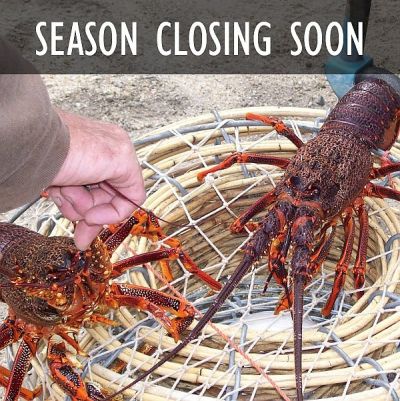 The recreational rock lobster season is closed from next Tuesday 1st May for:
The recreational rock lobster season is closed from next Tuesday 1st May for:
all rock lobster in the Eastern Region; and
for females in the Western Region.
You must have rock lobster pots and rings off the water in the Eastern Region by midnight on Monday 30th April. You cannot transit to or from the Western Region around Whale Head with lobster or gear on board during the Eastern Region closed season.
The season for males in the Western Region remains open until 31 August 2018.
- Written by Stephen Smith - Rubicon Web and Technology Training
- Category: IFS, DPIPWE, MAST and Peak Bodies
- Hits: 2336
 DR James Haddy from IMAS in Launceston is running a King George whiting frame donation research program. It appears that the adult whiting move out of the estuaries to spawn in deeper coastal areas up to 100m deep in April, and although he has sampled over 588 fish so far, he doesn’t have any mature/spawning fish captured in April. This is despite 7 years of sample collection. Information on adult whiting is important to assess the current minimum legal size of whiting in Tasmania. Currently, the smallest mature female recorded in Tasmania measured 37cm in total length with the next smallest individual measuring 40cm TL. What he needs is if anybody catches a whiting (particularly in coastal waters in APRIL) is to donate the fish frame for science. So instead of throwing the fish in the bin or back in the water after its been filleted.
DR James Haddy from IMAS in Launceston is running a King George whiting frame donation research program. It appears that the adult whiting move out of the estuaries to spawn in deeper coastal areas up to 100m deep in April, and although he has sampled over 588 fish so far, he doesn’t have any mature/spawning fish captured in April. This is despite 7 years of sample collection. Information on adult whiting is important to assess the current minimum legal size of whiting in Tasmania. Currently, the smallest mature female recorded in Tasmania measured 37cm in total length with the next smallest individual measuring 40cm TL. What he needs is if anybody catches a whiting (particularly in coastal waters in APRIL) is to donate the fish frame for science. So instead of throwing the fish in the bin or back in the water after its been filleted.
- Written by Stephen Smith - Rubicon Web and Technology Training
- Category: IFS, DPIPWE, MAST and Peak Bodies
- Hits: 3234
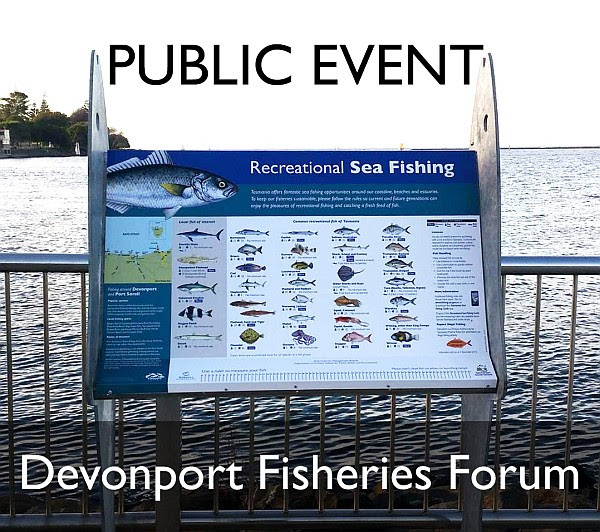 All welcome at North West forum - 16 April 2018
All welcome at North West forum - 16 April 2018
Everyone is invited to our public forum in Devonport to discuss local recreational fishing issues and hear presentations from IMAS researchers and DPIPWE fishery managers.
Topics:
Bluespot and rock flathead, King George whiting, short fin pike, garfish and estuary perch - a snapshot of key recreational fish biology.
New fish, new fishing opportunities? A case study of Tasmanian kingfish.
Calamari - what's the catch? What we know about growth and spawning closures.
Rock lobster - what's happening in the far north west plus East Coast rebuilding.
Forum discussion - your questions answered.
DATE: Monday, 16 April, 6.30 - 8.00pm
VENUE: Mersey Yacht Club, 6 Anchor Drive, East Devonport
More information
- Written by Stephen Smith - Rubicon Web and Technology Training
- Category: IFS, DPIPWE, MAST and Peak Bodies
- Hits: 4035
Read more: Fisheries Tasmania News - Devonport forum, King George whiting and scallops
 All welcome at North West forum - 16 April
All welcome at North West forum - 16 April
Everyone is invited to our public forum in Devonport to discuss local recreational fishing issues and hear presentations from IMAS researchers and DPIPWE fishery managers.
Topics:
- Bluespot and rock flathead, King George whiting, short fin pike, garfish and estuary perch - a snapshot of key recreational fish biology.
- New fish, new fishing opportunities? A case study of Tasmanian kingfish.
- Calamari - what's the catch? What we know about growth and spawning closures.
- Rock lobster - what's happening in the far north west plus East Coast rebuilding.
- Forum discussion - your questions answered.
DATE: Monday, 16 April, 6.30 - 8.00pm
VENUE: Mersey Yacht Club, 6 Anchor Drive, East Devonport
More information
- Written by Stephen Smith - Rubicon Web and Technology Training
- Category: IFS, DPIPWE, MAST and Peak Bodies
- Hits: 1570
Read more: Fisheries Tasmania News - Devonport forum, King George whiting and scallops 2018
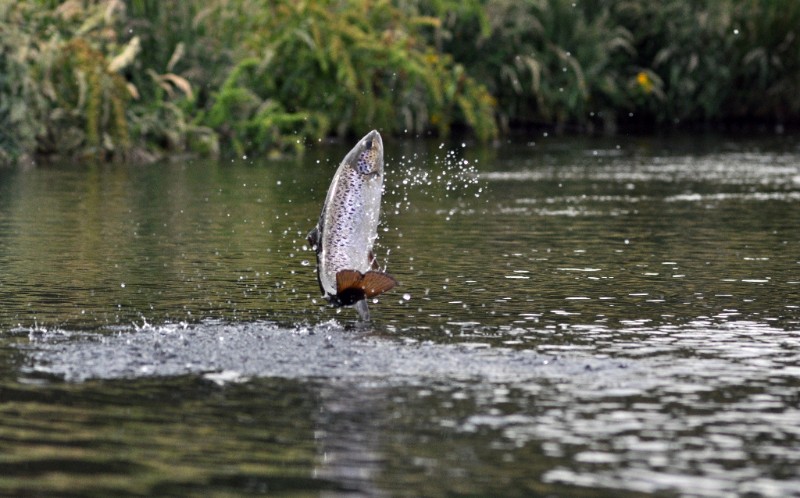 Have you thought about going fishing? Fancy a feed of trout or salmon?
Have you thought about going fishing? Fancy a feed of trout or salmon?
Easter is a great time to get back to nature and drop a line in the water. Recharge and enjoy the natural beauty that Tasmania has to offer.
With only a month of the brown trout open season to go – get out there and make the most of it.
The recent rain falling at Bronte Lagoon should see some water filling the mash creating a smorgasbord of drowned terrestrials for tailing fish.
- Written by Stephen Smith - Rubicon Web and Technology Training
- Category: IFS, DPIPWE, MAST and Peak Bodies
- Hits: 2842
 Scallop season is here
Scallop season is here
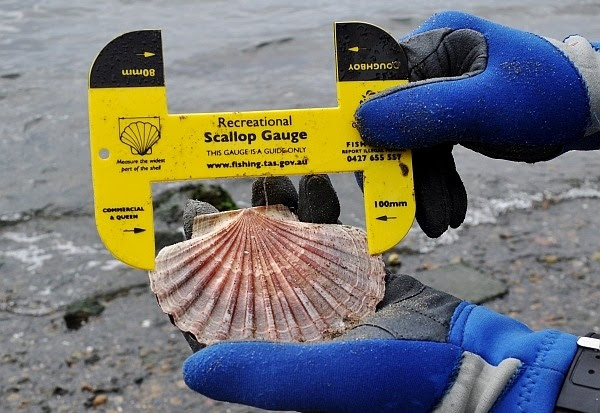
Who needs Easter eggs when there are scallops to be caught? The recreational season is now open except for the D'Entrecasteaux Channel.
Measuring gauges are available from Service Tasmania outlets.
Remember to measure and count scallops underwater as you dive. Highgrading your catch is not allowed, that is, you can't bring more than your daily bag limit of 50 scallops back to your boat and sort them there.
Scallop rules reminder
Flathead catch limits
- Written by Stephen Smith - Rubicon Web and Technology Training
- Category: IFS, DPIPWE, MAST and Peak Bodies
- Hits: 4249
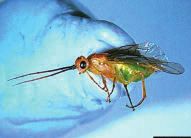 Willow sawfly (Nematus oligospilus)
Willow sawfly (Nematus oligospilus)
What is it?
Willow sawfl y is an insect which has recently arrived in Australia. The larval stage of the life cycle feeds on willow leaves, and large populations of larvae can defoliate adult willow trees.
Where did it come from?
Willow sawfl y is native to much of the northern hemisphere. It was fi rst recorded in South America in 1980, then in southern Africa in 1993 and New Zealand in 1997.
How did it get here?
It is unclear how willow sawfl y arrived in Australia, but it was not introduced deliberately. It is possible that adult sawfl ies were blown across from New Zealand or that cocoons were accidentally imported, for example on shipping containers. ... Read the PDF Flyer here
- Written by Stephen Smith - Rubicon Web and Technology Training
- Category: IFS, DPIPWE, MAST and Peak Bodies
- Hits: 3121
IMAS are looking for keen fishers to participate in their research angler logbook program. The logbook collects information on recreational catch including species caught, fish size and how many fish are kept or released. If you're interested please email Sean Tracey at: This email address is being protected from spambots. You need JavaScript enabled to view it.
The logbook information provides important size and weight data that feeds into the Survey of Tasmanian Recreational Fishers to provide total catch estimates by weight.
This email address is being protected from spambots. You need JavaScript enabled to view it. email This email address is being protected from spambots. You need JavaScript enabled to view it.
- Written by Stephen Smith - Rubicon Web and Technology Training
- Category: IFS, DPIPWE, MAST and Peak Bodies
- Hits: 2346
New to fishing in Tassie? Eleven different regional fishing maps are now available to download.
Features include: Where to Fish, What will I Catch and Local Fishing Facts. Plus a quick guide to Tassie fishing rules. Great for beginner fishers, tourists and families. Regions covered are:
East Coast, St Helens, the North East and Flinders Island;
Tamar Estuary, Devonport and Port Sorell, and the North West Coast;
Macquarie Harbour and King Island; and
Bruny D'Entrecasteaux Region, Derwent Estuary and the Tasman Peninsula
- Written by Stephen Smith - Rubicon Web and Technology Training
- Category: IFS, DPIPWE, MAST and Peak Bodies
- Hits: 3105
Current TFBN
Click above for current issue content. The current issue of TFBN is extensive and topical. In Tackle Stores, Newsagents and by subscription.
Delivered to your door for $48 for 2 years (8 issues). To subscribe, send Mike $48 via www.paypal.com.au . (Basic instructions are here) The email is at Contact Us. Your address will be included from PayPal.
Or phone Mike with your c/c handy on 0418129949
Please ensure your details are correct, for Mike to organise delivery.
TFBN Newsletter Sign up Form
Why not submit an article ?
When you have finished for the day, why not have a brag about the ones that didn't get away! Send Mike an article on your fishing (Click here for contact details), and we'll get it published here. Have fun fishing - tasfish.com
Category Descriptions
Here is a list of all of the Article Categories. The number in Brackets, eg (13) is the number of articles. Click on Derwent River and all articles relating to the Derwent will be displayed in the central area.
Articles by Category
-
Rivers (3)
-
Saltwater and Estuary Fishing (149)
-
Kayak Fishing (34)
-
Lakes (1)
-
Great Lake (62)
-
Lake Leake (52)
-
Woods Lake (16)
-
Lake Augusta (11)
-
Huntsman Lake (13)
-
Lake Pedder and Gordon (10)
-
Lake Dulverton (5)
-
Lake Crescent (6)
-
Tooms Lake (10)
-
Lake Mackintosh (2)
-
Lake Barrington (5)
-
Little Lake (8)
-
Meadowbank Lake (5)
-
Lake King William (7)
-
Lake St Clair (2)
-
Western Lakes (12)
-
Arthurs Lake (35)
-
Lake Echo (7)
-
Four Springs (54)
-
Lake Sorell (7)
-
Lake Burbury (6)
-
Other Lakes (57)
-
Brushy Lagoon (18)
-
Little Pine Lagoon (5)
-
Penstock Lagoon (16)
-
Brumbys Creek (7)
-
-
Events (48)
-
Estuary Fishing (0)
-
Coastal Catches (46)
-
Super Trawler (46)
-
IFS, DPIPWE, MAST and Peak Bodies (435)
-
Commercial Interests (98)
-
Other (24)
-
TFBN Back Issues (8)
-
Fly Fishing (67)
-
Trout Fishing (250)
-
Meteorology and Weather (8)
-
Jan’s Flies (50)
-
Tuna Fishing and other Game Fishing (86)
-
Cooking Fish (19)
-
Fishing Information (1)
-
Fishing Books (8)
-
Videos (5)
-
Tackle, Boats and other Equipment (146)
-
World Fly Fishing Championship 2019 (2)
Popular Tags
windyty.com
Visit https://www.windyty.com/
Rubicon Web and Technology Training
Hello everyone, I thought it would be a good time to introduce myself.
My name is Stephen Smith and I have been managing the website tasfish.com since May 2009.
It has been an epic journey of learning and discovery and I am indebted to Mike Stevens for his help, support and patience.
I am developing a new venture Rubicon Web and Technology Training ( www.rwtt.com.au ). The focus is two part, to develop websites for individuals and small business and to train people to effectively use technology in their everyday lives.
Please contact me via www.rwtt.com.au/contact-me/ for further information - Stephen Smith.
From the Archives ... (last chance)
Fishing on the Wild Side
Fishing on the Wild Side
Mike Fry doesn’t only live on the Wild Side of Tasmania, but also goes fishing in probably the wildest boat ever to troll for trout—certainly in Tasmania.
When your mate says ‘What are you doing tomorrow, want to come up the Gordon for the night?’ it would be pretty hard to say anything else except “you bet” and start checking out your tackle box and packing your overnight bag. But if your mate was Troy Grining and he wanted to give his new 52ft, high speed cruiser a run across Macquarie Harbour, test the new onboard dory with a chance of landing a nice Gordon River Brown you would have to feel privileged. I didn’t say anything about getting on my hands and knees and kissing his feet…just having a lend of ya’ but I did feel very appreciative.




